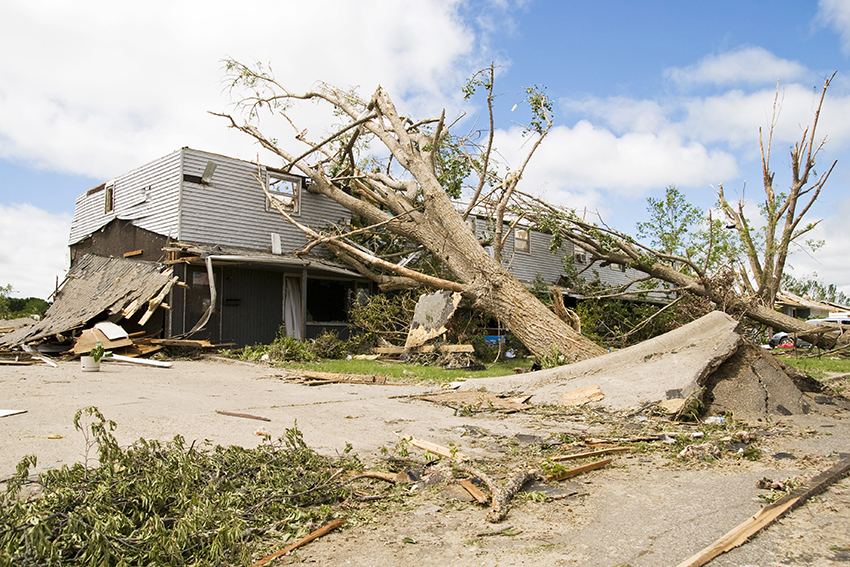Welcome to Echelon insurance
Staying ahead of the curve: 5 trends that may impact commercial businesses in Canada
Staying on top of industry trends is an important aspect of any role, and the insurance industry is no exception. Brokers should always be on top of what’s happening in the markets they serve so they can best support their clients, and business owners need to be aware of trends and how they may affect their operations.
As a leading Specialty insurer, we want to draw attention to five trends we’re seeing that may impact commercial businesses in Canada today. From water damage to regulatory changes and supply-chain issues – all of these can have significant impacts oo the way businesses operate, their approach to loss prevention, and the type of insurance coverage they need.

Catastrophic weather events
From wildfires and hurricanes, to flooding and landslides, the frequency and magnitude of catastrophic weather events has been steadily increasing across Canada in recent years. When an extreme weather event hits, it has the potential to cause a significant interruption to businesses in the area. This can range from a full- to partial shutdown based on the level of damage to property and critical assets such as machinery or power supplies.
We’ve seen the devastating impact that catastrophic weather events can have on Canadian customers and businesses, but also the effect that these weather events have on the insurance industry – both short and long-term through underwriting results, and their longer-term impact on market capacity.
It is imperative that commercial businesses have comprehensive loss prevention programs in place to manage their exposure to loss associated with weather-related catastrophes. A key component of an effective loss prevention program for any natural hazard event is ensuring there is an Emergency Response Plan (ERP) in place at the insured’s facilities. An assessment of the property should be made to help focus the ERP and will include identifying the various natural hazard threats the property may be exposed to.
The ERP plan usually involves three phases: preparing for the event, responding to the event, and recovering from the event. Depending on the type of natural hazard event, additional steps may be required to help ensure a complete response.
Though we can’t be certain of the impact of weather-related disasters, we can be certain that having a strong Emergency Response Plan will help limit or mitigate potential losses.

Current market conditions and capacity
Though we are seeing softening of personal lines, due to factors such as Ontario’s Take All Comers regulation and general capacity increases post-pandemic, we’re not seeing as rapid of change to commercial lines.
Despite the gradual, measured easing of the hard commercial market as insurers become competitive with their rates, there remains a strong opposing force – the commercial capacity crunch. In particular, capacity limitations are evident in Specialty, niche markets and are driven by several factors including increases in the frequency and severity of losses.
Brokers play a crucial role in educating their customers on current market conditions, including factors affecting price, while delivering the best insurance solutions for their complex needs. As a result, owners can rest assured knowing they’re making informed decisions about the type and level of coverage for their business.

Supply chain constraints and rising inflation
Canada’s supply chain continues to be affected by challenges relating to the COVID-19 pandemic, which, paired with inflation, poses a major challenge to small businesses. In fact, nearly 50% of small businesses in Canada are suffering from current supply chain issues.
Inflation and supply chain issues are also having an impact on the claims settlement process across Canada, as increased rebuild costs and delays in receiving materials have led to rising claims costs and settlement delays. In cases where there are multiple claims at one time, such as after a catastrophic weather event, these factors are further constrained, worsening the stress already faced by commercial claimants.
Constrains in one industry are often felt in others, as is the case for Canada’s construction industry which has been plagued by significant scheduling delays. In addition to challenges obtaining insurance coverage, the construction industry continues to face shortages in materials, equipment, and skilled labour. As a result, businesses waiting to have critical assets rebuilt may require policy extensions beyond their scheduled expiration.
The need to be proactive and prevent loss before it happens is more important than ever. Brokers must keep loss prevention top of mind and work with customers to craft a loss prevention plan that considers potential rebuild delays.

Water damage
From a loss control perspective, water damage has been a significant driver of rising commercial property claims costs for some time – more than doubling since 2015. Water can be a major contributor to property loss, including damage to equipment, furniture, finishes, and food products. In multi-storey buildings, leaks can affect multiple floors and cause significant damage.
Loss prevention practices include (but are not limited to):
- Plumbing systems that may be subject to cold temperatures should be well-insulated to prevent freezing and subsequent pipe bursts.
- Pipes and other water connections around hot water tank heaters, rooftop drain piping, domestic and commercial water supplies, and sprinkler systems should be checked monthly for leaks.
- Consideration should be made to the installation of water leak detection systems, particularly in multi-storey facilities.
As commercial businesses adjust and adapt post-pandemic, it’s important not to lose focus on the importance of having a comprehensive risk management program that includes proactive measures to protect against water damage. Performing regular inspections not only helps to prevent breakdowns and property damage but also plays an important role in providing a safe environment for occupants.

Broker acquisitions and mergers
As insurers continue to grow and diversify, the pace of mergers and acquisitions within the insurance industry shows no sign of slowing. In fact, 5% of brokerages employ 55% of all Brokers in Ontario, according to Insurance Brokers of Ontario (IBAO) figures.
Consolidation presents both a challenge and an opportunity for Brokers. Though consolidation helps to strengthen the Broker distribution arm, this practice can lead to less choice for consumers. Some customers may also have concerns over weakened customer service levels, feeling as though they will lose the relationship they’ve built with their local Broker. Maintaining service standards is a key consideration for Property and Casualty (P&C) Brokers, as recent market research from Advanced Symbolics Inc. (ASI) found that Ontario consumers value personalized service most.
It’s imperative that Brokers keep the consumer in mind amidst consolidation, focusing on how they can bring the best value and personalized service to their commercial clients.
From fresh start-ups to well-established operations, commercial businesses require protection from a range of evolving market and climate factors year-round. Using risk-minded insights provided by insurers, Brokers can help their commercial clients mitigate their unique risks and return their focus to running their business.